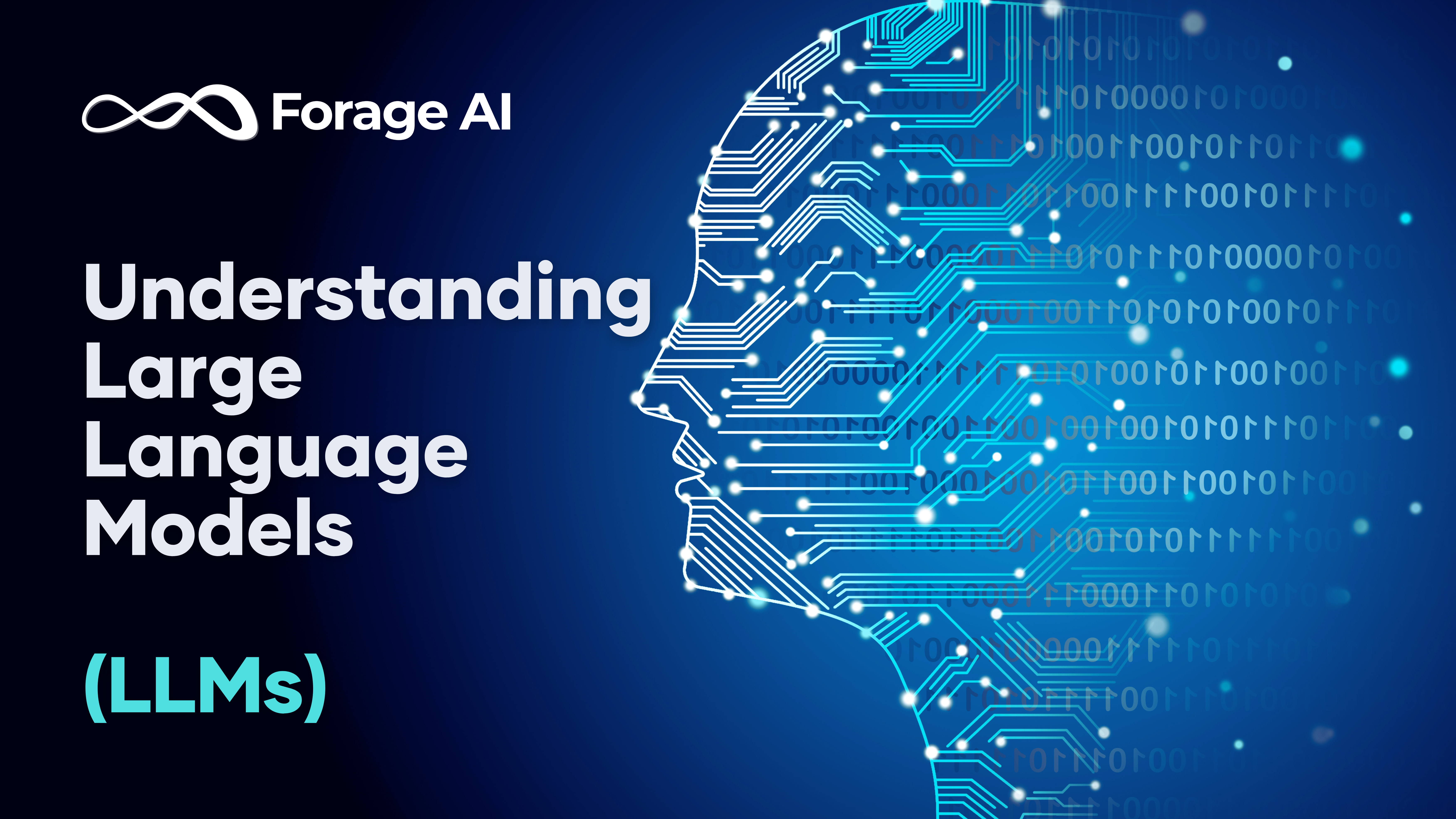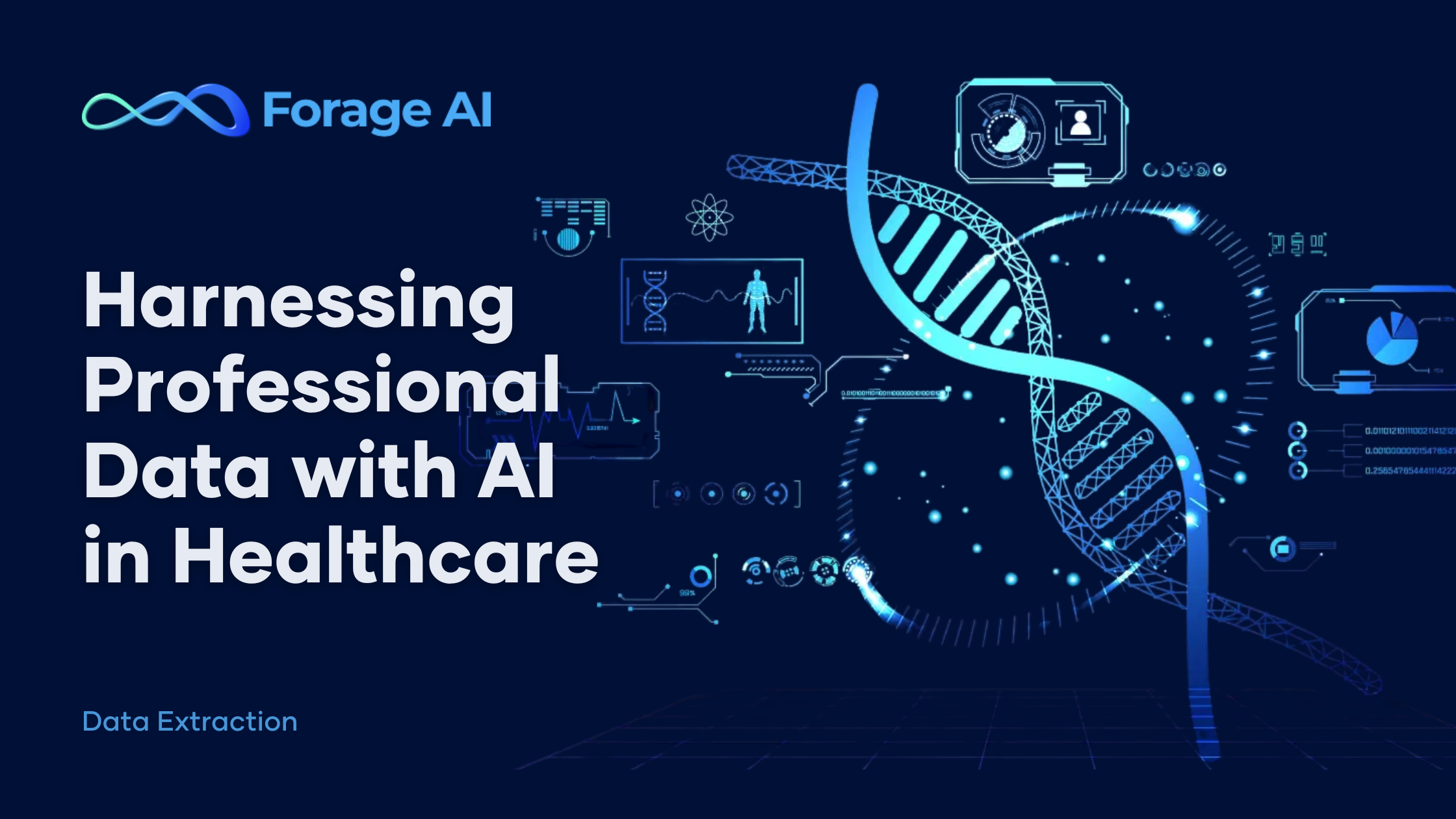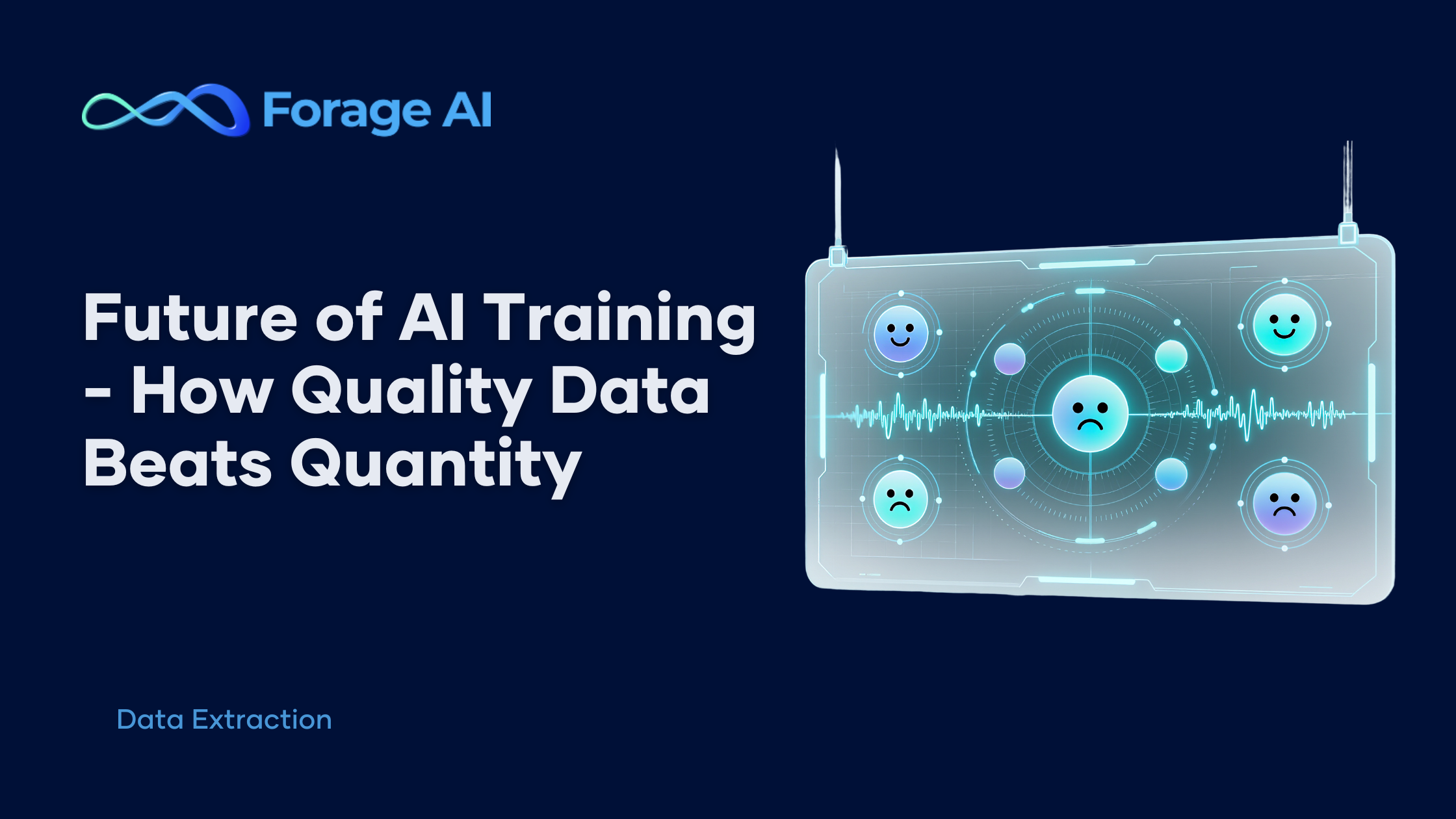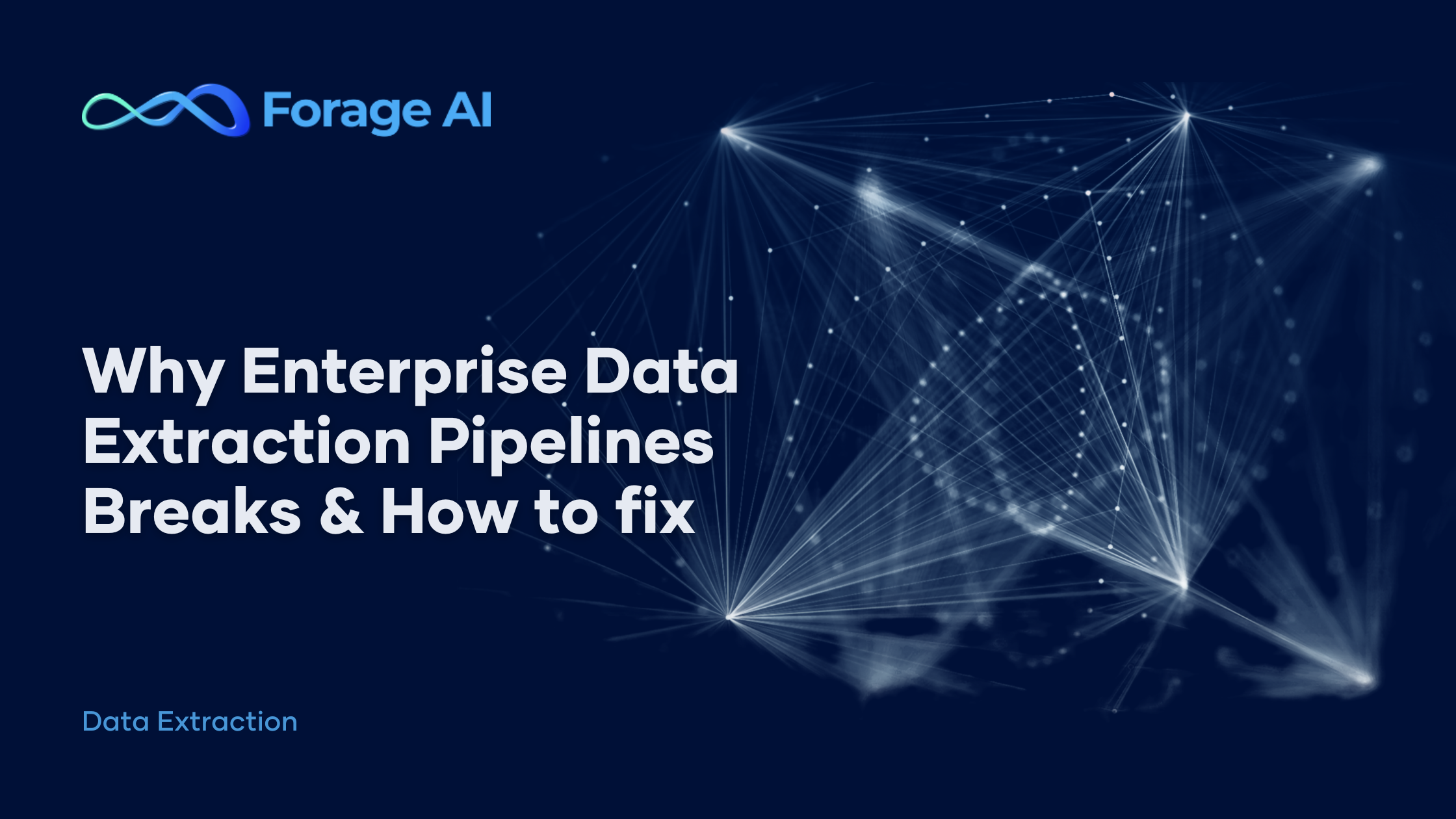Large Language Models (LLMs) represent a significant advancement in the field of artificial intelligence, offering unprecedented capabilities in natural language processing and understanding. These models, grounded in deep learning architectures, have demonstrated a remarkable ability to process and generate human-like text across a wide range of applications. Their influence is expanding rapidly, driving innovation in industries that require sophisticated language comprehension and generation.
In this blog, we’ll explore the inner workings of LLMs, how they achieve such impressive results, and what makes them so transformative. By breaking down their structure, performance, and real-world applications, we’ll uncover the ways LLMs are advancing AI and what their future might hold.
Definition
Large Language Models (LLMs) are neural network-based artificial intelligence systems trained on an extensive corpus of text data. They utilize transformer architectures to process and generate human-like text, performing tasks such as language understanding, generation, and translation by predicting probable word sequences based on context.
However, to refer to them merely as text generators would greatly underestimate their capabilities. These models are sophisticated pattern recognition systems that have learned to understand and navigate the complexities of human language at an unprecedented scale. Their ability to process, interpret, and generate language goes far beyond simple text manipulation, reflecting a deep understanding of linguistic patterns and context.
Anatomy of LLMs
Let’s break down the fundamental building blocks of Large Language Models:
- Tokens: These are the basic building blocks of language that LLMs work with. Tokens can be whole words, parts of words, or even individual characters. For example, the sentence “Forage AI: Your One-Stop AI Partner” might be tokenized as [“Forage”, “AI”, “:”, “Your”, “One”, “-“, “Stop”, “AI”, “Partner”]. This flexibility allows LLMs to handle diverse languages and text structures efficiently.
- Embeddings: Once tokens are created, they are transformed into dense vector representations called embeddings—essentially the “language” that AI systems can interpret. These embeddings capture the semantic meaning of tokens, clustering similar words close to each other in the LLM’s multidimensional space. This process enables the model to understand relationships and contexts, allowing it to interpret and generate human-like text more effectively.
- Positional Encoding: Transformers rely on positional encoding to track the order of tokens, as they don’t process input in sequence. This helps the model preserve the structure and meaning of sentences.
- Attention Mechanisms: Attention mechanisms help the LLM decide which parts of the input text are most important. This dynamic focus allows the model to consider context and relationships between distant words in a sentence.
- Multi-Head Attention: Instead of focusing on just one relationship, multi-head attention allows the model to look at different parts of the sentence simultaneously, capturing more complex patterns and relationships in the text.
- Feed-Forward Layers: After attention mechanisms, LLMs use feed-forward layers to further transform and refine the processed information. These layers help the model learn more intricate patterns in language.
- Layer Normalization: To ensure training remains stable, layer normalization is applied after each layer of the model. It keeps output well-balanced and accelerates the learning process.
- Dropout: To prevent overfitting (when a model performs well on training data but poorly on new, unseen data), dropout is used during training. This regularization technique randomly drops out units, ensuring that the model generalizes better and avoids reliance on specific data points.
- Transformer Architecture: The core framework of LLMs is the transformer architecture, which is built from layers of attention mechanisms and feed-forward neural networks. This design allows LLMs to process multiple tokens in parallel, making them efficient and effective in capturing long-range dependencies.
- Parameters: LLMs are trained with billions of parameters, which are the learned weights of the neural network. These parameters encode the knowledge the model gathers during training and dictate how it generates responses. The more parameters, the greater the model’s capacity to learn complex language patterns.
Architecture
The transformer architecture, which powers most modern LLMs, is an engineering breakthrough in artificial intelligence. It enables these models to process language in a way that mirrors how humans interpret context and relationships between words. To help understand this, let’s walk through an example of how it works step by step.
Example: “Forage AI simplifies data extraction.”
1. Input Source
The sentence “Forage AI simplifies data extraction” is passed into the model as input.
2. Tokenization
The sentence is split into smaller components called tokens. Each token is a piece of text that the model can process. For our example, the sentence is tokenized as:
Tokens:
[“Forage”, “AI”, “simplifies”, “data”, “extraction”, “.”]
This results in 6 tokens. In a larger context, LLMs can process millions or billions of tokens across different sentences or documents.
3. Generating Embeddings
Each token is now converted into a vector representation—a series of numbers that reflect the semantic meaning of the word. These embeddings are crucial as they allow the model to understand relationships between words and phrases.
Here’s an example of the vector embeddings generated for each token in our sentence:
- “Forage”: [1.2, -0.3, 2.4, 0.8, 0.6, -0.1]
- “AI”: [0.9, 1.7, -0.6, 1.1, -1.4, 0.5]
- “simplifies”: [0.4, 2.1, 1.8, -0.5, 0.9, -1.2]
- “data”: [1.3, -0.7, 0.8, 2.0, 1.5, -0.3]
- “extraction”: [0.5, 1.8, 0.2, -1.6, 1.7, 1.2]
- “.”: [0.1, -0.9, 0.7, 0.3, -0.4, 0.8]
Each token has its own vector in a multi-dimensional space. Typically, embeddings have hundreds or even thousands of dimensions, but we’re simplifying them here for clarity.
In a full-scale model, embeddings might contain vectors of size 768, 1024, or even larger. The embeddings for billions of tokens are stored and processed, which demonstrates the vast capacity of LLMs to handle and represent complex language data.
4. Assigning Positional Values
Since transformers process tokens in parallel (instead of sequentially), positional encodings are added to the embeddings. This ensures that the order of words is preserved in the sentence. Without this step, the model would lose track of how words are arranged.
In our example, positional encoding ensures that the model understands that “Forage AI” is the subject, “simplifies” is the verb, and “data extraction” is the object. Without this, the relationships between words would get mixed up, and the sentence could lose meaning.
5. Applying Self-Attention Mechanism
Now, the self-attention mechanism comes into play. At this stage, the model looks at how each word relates to every other word in the sentence.
For example, in the sentence “Forage AI simplifies data extraction”, the model will calculate how strongly “Forage” is connected to “AI”, how “AI” relates to “simplifies”, and how “simplifies” connects to “data extraction“.
The attention mechanism assigns weights to these relationships. For instance:
- The model assigns a strong connection between “Forage” and “AI”, as they are part of the same entity.
- Similarly, “simplifies” has a strong connection with “data extraction”, indicating the action being performed.
This process allows the model to focus on the most important parts of the sentence and correctly capture the relationships.
Additionally, multi-head attention allows the model to analyze these relationships from multiple perspectives. For example:
- One head may focus on the subject-verb relationship (Forage AI -> simplifies).
- Another head might focus on the verb-object relationship (simplifies -> data extraction).
6. Extracting High-Level Features with Feed-Forward Networks
Once the attention mechanism has weighed the relationships, the embeddings are passed through feed-forward networks. These layers refine and extract higher-level meanings from the sentence.
For example, at this stage, the model might understand that the phrase “simplifies data extraction” implies improving efficiency or automating processes.
These feed-forward networks enable the model to learn more complex patterns, making it capable of handling nuanced sentences.
7. Refining with Reinforcement Learning (Optional)
In some models, reinforcement learning is used to fine-tune performance. This involves rewards and penalties based on the model’s accuracy.
For example, if the model correctly predicts the next token after “Forage AI simplifies”, such as “data”, it would be rewarded. If it predicts something incorrect, like “books”, it would be penalized.
This allows the model to improve its accuracy over time, becoming more reliable with each iteration.
8. Generating Output Predictions
Finally, the model predicts the next word in the sequence. Based on the embeddings and relationships between the tokens, the model generates probabilities for each possible next token.
For instance, after processing “Forage AI simplifies”, the model might generate the following probabilities for the next word:
- “data”: 0.87
- “processes”: 0.07
- “operations”: 0.03
Because “data” has the highest probability, it would be chosen as the next word.
The model continues this process until it completes the sentence or reaches a predefined stopping point.
Recap of the Workflow
- Input Source: The raw sentence “Forage AI simplifies data extraction” is fed into the model.
- Tokenization: The sentence is split into 6 tokens.
- Generating Embeddings: Each token is converted into a 6-dimensional vector, capturing its meaning. (In larger models, embeddings typically have hundreds or thousands of dimensions.)
- Assigning Positional Values: Positional encodings are added to maintain word order.
- Applying Self-Attention Mechanism: The model weighs the relationships between words, focusing on key parts of the sentence using multi-head attention.
- Extracting High-Level Features: Feed-forward networks refine the sentence’s meaning, allowing the model to understand deeper concepts.
- Refining with Reinforcement Learning (optional): The model improves its accuracy over time by learning from rewards and penalties.
- Generating Output Predictions: The model predicts the next token, using probabilities to select the most likely word.
Connecting the Dots
The vector for each token in this simple sentence is just one part of the bigger picture. A full LLM might process millions of sentences, with each token having hundreds of dimensions, totaling billions of parameters. This capacity allows LLMs to generate coherent, context-aware text across a variety of complex tasks.
How to Access LLMs
LLMs are accessible to a wide range of users, from developers integrating them into applications to general users leveraging them for chats and content generation. Let’s explore the two main ways to access LLMs and how they can be utilized effectively.
Developer Access: APIs and LangChain
Developers can integrate LLMs programmatically, either through APIs or specialized libraries like LangChain, allowing for flexible and powerful use cases in software and applications.
APIs
APIs like OpenAI’s GPT or Google’s Gemini provide a simple way for developers to send inputs (prompts) and receive text-based outputs in real time. This method enables LLMs to be embedded in applications for tasks like content generation, customer service automation, and much more.
Example in Python:
import openai
# Authenticate with your OpenAI API key
openai.api_key = "your-api-key-here"
# Create a chat completion using the gpt-4-turbo (formerly o1-preview) model
response = openai.ChatCompletion.create(
model="gpt-4-turbo",
messages=[
{"role": "user", "content": "What's the capital of France?"}
],
max_tokens=10
)
# Print the response
print(response['choices'][0]['message']['content'].strip())In this case, the model responds with “Paris.”
LangChain
LangChain allows developers to build complex workflows by chaining together prompts and responses, making LLMs even more powerful. It can be used to create sophisticated systems like chatbots or document analyzers that require multiple steps of interaction.
Example in Python:
from langchain.chains import ConversationChain
from langchain.llms import OpenAI
# Initialize the LLM model
llm = OpenAI()
# Create a conversation chain with the LLM
conversation = ConversationChain(llm=llm)
# Make a prediction based on the user input
response = conversation.predict(input="Tell me about AI applications in healthcare.")
# Print the response
print(response)LangChain’s ability to manage multi-turn conversations or sequential tasks makes it ideal for building advanced solutions.
General User Access: Chat Interfaces
For non-technical users, LLMs can be accessed through chat interfaces such as ChatGPT or Anthropic’s Claude. These platforms allow users to engage with LLMs by simply typing questions or prompts and receiving detailed, natural language responses.
- Example Use Cases:
- Ask for summaries (“Summarize the latest AI trends”).
- Generate emails (“Write a follow-up email for a job interview”).
Prompt Engineering: Getting the Best Results
Regardless of whether you’re a developer or general user, understanding prompt engineering is key to getting the most out of LLMs. Prompt engineering involves crafting clear, specific “queries” that guide the model’s response.
Example:
- Simple Prompt: “Make a website.”
- Refined Prompt: “Create a single-page HTML and CSS website for a local bakery. Include a header with the bakery’s name, a navigation menu, and sections for ‘About Us’, ‘Our Products’, and ‘Contact’. Use a warm color scheme, add images of baked goods, and ensure the layout is responsive for mobile devices.”
The refined prompt provides clarity and context, improving the relevance of the LLM’s output.
By iterating on prompts—adding detail, setting constraints, or specifying the tone—you can drastically improve the quality of the model’s responses.
Comparing the Latest LLMs: Capabilities and Benchmarks
The ongoing advancements in LLMs are marked by their diverse capabilities and performance across various benchmarks. Here’s a comparative breakdown of the most notable LLMs as of 2024, highlighting token limits, key results from widely recognized benchmarks like MMLU (Massive Multitask Language Understanding), GSM8K (Math Reasoning), and HumanEval (coding tasks), along with any unique features that set them apart:
| Model | Parameters | Token Limit | MMLU (%) | GSM8K (%) | HumanEval (%) | Notable Features |
| GPT-4o | 405B | 128K | 95.3 | 96.8 | 89 | Multimodal processing, extended context window, superior real-time interaction |
| LLaMA 3.1 | 8B, 70B, 405B | 128K | 88.6 | 96.8 | 89 | High efficiency, excels in coding and advanced math tasks, multilingual |
| Claude 3.5 Sonnet | 71B | 200K | 90.4 | 71.1 | 64 | Twice as fast as Claude 3 Opus, excels in summarization, complex workflows |
| Qwen2.5 | 7B, 72B | 131K | 69 | 84.4 | 82.1 | Strong performance in structured data tasks and JSON generation |
| Mistral 8x7B | 56B | 128K | 84.4 | 89.2 | 91.5 | Designed for high-efficiency, large-scale tasks, excels in reasoning |
| Gemini 1.5 | 27B | 256K | 78.1 | 81.5 | 85 | High-speed API usage, optimized for large-scale tasks |
General Applications of LLMs
Here are powerful applications of how Large Language Models (LLMs) are being used today, highlighting their versatility across industries:
- Content Creation: Elevating creativity with AI-assisted writing and code generation.
- Customer Support: Delivering hyper-personalized responses, almost as if a human is behind the screen.
- Education: Immersive, AI-driven experiences tailored to individual learning paths.
- Data Extraction: Automating complex document analysis and highly sophisticated web data extraction with near-instant precision, reshaping how industries like finance and healthcare manage vast data.
- No-Code Programming: LLMs are enabling users with little to no coding knowledge to create functional programs by auto-completing code, suggesting tasks, and translating ideas into executable software.
Challenges and Mitigations
Despite their impressive capabilities, LLMs face several critical challenges, including hallucinations, token limitations, bias, and privacy concerns. Let’s explore these issues and see how developers are tackling them with real-world examples.
Hallucinations
Hallucinations occur when LLMs generate outputs that seem coherent but are factually incorrect or entirely fabricated. This happens because LLMs predict likely text sequences based on patterns, not real-time facts or databases.
Why Hallucinations Occur:
- Training Data Limitations: LLMs are trained on large but finite datasets, which may be outdated or incomplete.
- Contextual Misunderstanding: The model may misinterpret the context of a question, leading to incorrect results.
Implications:
- Misinformation: Hallucinations in healthcare or legal advice can have serious consequences, spreading incorrect information that might lead to poor decisions.
- Trust: Frequent hallucinations erode user trust, especially in applications like education or news.
Mitigation Strategies:
- Retrieval-Augmented Generation (RAG): Combining LLMs with verified databases can prevent hallucinations by grounding responses in factual data. For example, Forage AI uses RAG to extract data from real-time web sources, reducing hallucination risks during web scraping tasks.
- Fact-Checking Modules: Automated systems cross-check outputs against reliable sources, reducing the risk of false information.
- Explicit Uncertainty: Training models to acknowledge when they lack reliable data can prevent them from confidently delivering incorrect responses.
Token Limitations
LLMs process information in fixed-length text chunks called tokens. These limitations affect how much context the model can handle at once, posing challenges for longer documents or conversations.
Example:
For instance, the token limit for GPT-4 is 32,000 tokens, which restricts the model from handling very long conversations or documents in one pass.
Implications:
- Context Loss: In long conversations, models may “forget” earlier parts of the dialogue, leading to disjointed answers.
- Chunking Issues: Large documents need to be split into sections, risking loss of overall context.
Mitigation Strategies:
- Sliding Window Approach: Models process text by analyzing overlapping sections, ensuring some context continuity across chunks.
- Hierarchical Summarization: Summarizing individual sections first, then combining them into a complete summary.
- Memory Mechanisms: External memory systems store previous responses and recall them when needed.
Bias and Fairness
LLMs trained on human-generated data can inadvertently propagate societal biases. This is particularly problematic in high-stakes areas like hiring, legal decisions, and loan approvals.
Types of Bias:
- Demographic Bias: Models may favor certain races, genders, or age groups.
- Cultural Bias: Outputs may reflect the dominant cultural norms in the training data.
Mitigation Strategies:
- Bias Detection Tools: Algorithms detect bias in outputs and adjust the model’s responses accordingly.
- Debiasing Techniques: Developers use fine-tuning and post-processing methods to reduce biases.
- Ethical Guidelines: Models like GPT-o1 adhere to frameworks like Constitutional AI, ensuring ethical principles are integrated into the model’s behavior.
Privacy and Security Concerns
With LLMs processing vast amounts of data, privacy and security risks are inevitable. Models may inadvertently reveal sensitive information from their training data or become vulnerable to adversarial attacks.
Key Concerns:
- Data Exposure: There is a risk of sensitive information from the training data being leaked in generated outputs.
- Adversarial Attacks: Attackers can manipulate inputs to cause the model to produce biased or harmful outputs.
Mitigation Strategies:
- Differential Privacy: Adding noise to training data helps protect individual privacy while maintaining the utility of the model’s outputs.
- Federated Learning: Models can be trained across decentralized data sources without sharing raw data, reducing privacy risks.
- Homomorphic Encryption: Allows computations to be performed on encrypted data, ensuring privacy even during processing.
By addressing these challenges through advanced techniques like RAG, ethical frameworks, and privacy-focused training, LLMs are becoming more reliable, accurate, and ethical.
State of LLMs in 2024
As we move through 2024, Large Language Models (LLMs) have made groundbreaking strides in capabilities, pushing the boundaries of what AI can achieve. Here’s a concise overview of the most critical advancements shaping the field this year:
Multimodal Mastery
LLMs now seamlessly integrate text, image, video, and audio processing. Models like GPT-4V and Apple’s Vision Pro AI excel in tasks requiring multimodal input, such as image captioning, video analysis, and even complex medical imaging. These developments have real-world applications in healthcare, media, and design, providing richer insights by combining different data types.
Reasoning and Problem-Solving
Models like GPT-o1 are setting a new standard in complex reasoning tasks. While these models excel in solving intricate problems in science, math, and coding through Chain-of-Thought (CoT) prompting, they still do not have real-time data integration capabilities. They focus on reasoning through provided data, outperforming previous models like GPT-4o in logical and multi-step tasks.
Agentic and Autonomous Behavior
LLMs have evolved beyond passive responses to exhibit agentic behavior, where they can autonomously complete tasks by interacting with external tools and APIs. Models like GPT-o1 have demonstrated agentic workflows, allowing them to perform more complex operations by leveraging APIs, but they still require human prompts to initiate workflows. While they don’t access real-time data independently, their reasoning abilities make them powerful for automating structured tasks.
Web Scraping and Data Extraction
Forage AI is a leading example of how LLMs are enhancing web scraping and data extraction. By integrating Retrieval-Augmented Generation (RAG), Forage AI enables seamless extraction of structured and unstructured data, even from complex web pages and documents. These advancements make real-time data extraction more scalable and accurate, particularly in sectors like finance and market intelligence, where timely data is crucial.
Efficiency and On-Device Models
Efficiency has become a major focus in 2024, with models being optimized for edge devices. Quantization techniques allow for smaller, more efficient models like Apple’s Vision Pro, which can run on smartphones without relying on cloud infrastructure. These innovations make LLMs accessible for real-time AI interaction in consumer technology, healthcare, and emergency services.
Domain-Specific LLMs
Specialized models like BioGPT, LegalBERT, and FinBERT have been fine-tuned to outperform general models in their respective industries. Whether it’s medical research, legal analysis, or financial forecasting, these domain-specific LLMs provide more accurate, context-aware insights, making them essential tools for professionals in those fields.
Ethical AI and Governance
The ethical use of AI is increasingly emphasized, with models like GPT-o1 integrating Constitutional AI principles to follow strict ethical guidelines. New safety frameworks and interpretability tools ensure that LLMs are not only powerful but also trustworthy, particularly in sectors like healthcare and law where decision transparency is critical.
Conclusion
Large Language Models have pioneered a new era of AI-powered data extraction. Their ability to understand context, navigate complex structures, and generate human-like text has transformed how businesses handle information. From tackling millions of datasets to interpreting complex web navigations, LLMs offer solutions to long-standing challenges in data extraction.
However, the power of LLMs comes with its own set of challenges. Hallucinations, token limitations, and the need for explainable AI in regulated industries are hurdles that require innovative solutions. As LLMs continue to evolve, particularly in multimodal processing and domain-specific applications, they promise even greater accuracy and efficiency in document handling and data analysis.
Ready to leverage the power of LLMs for your data extraction needs? Forage AI specializes in cutting-edge LLM solutions tailored to your unique challenges. Our expertise in Retrieval-Augmented Generation (RAG) and custom AI guardrails ensures accurate, reliable results for your critical business documents. Don’t let valuable data remain trapped in complex data sources – contact Forage AI today and discover how our LLM-driven approach can transform your information processing and drive your business forward.





